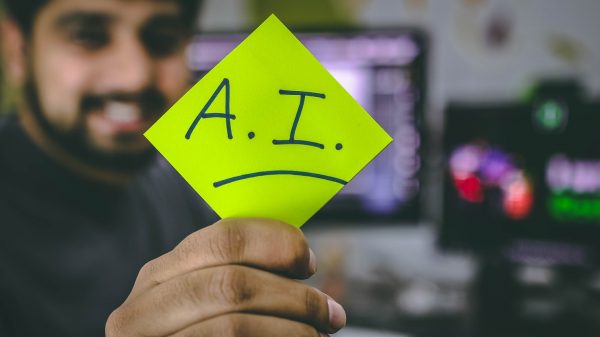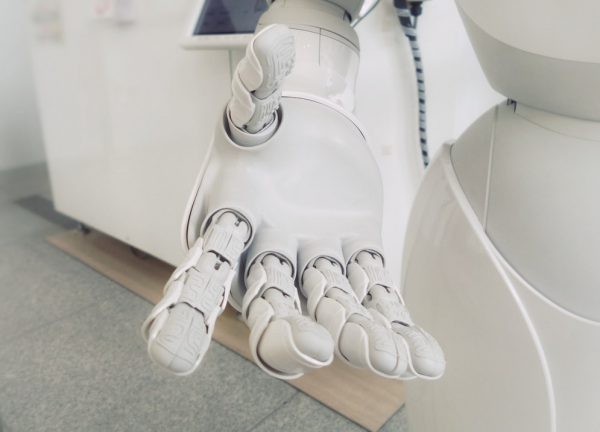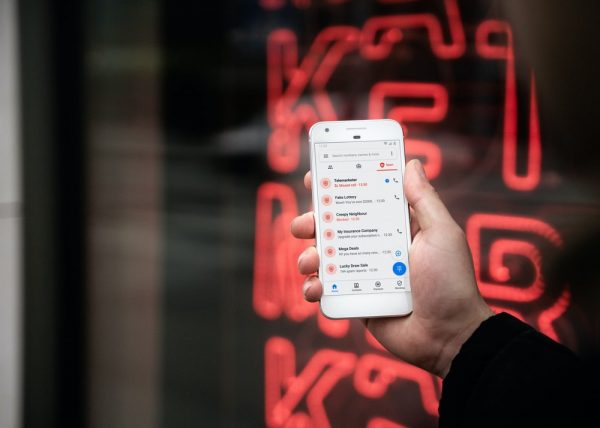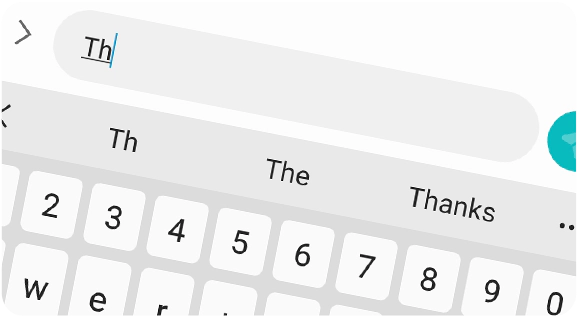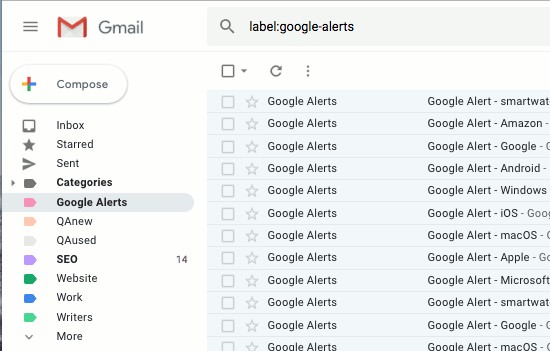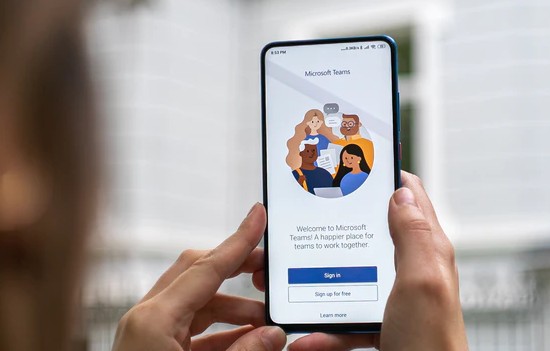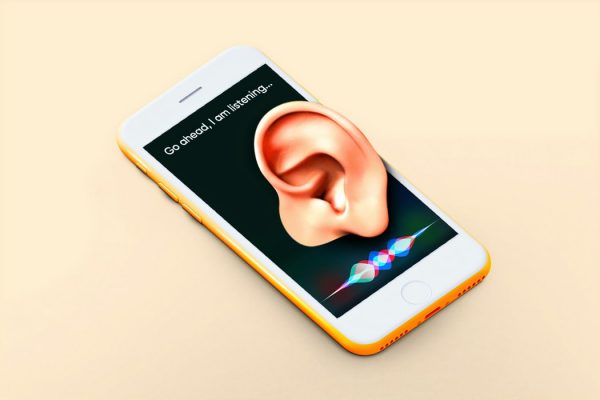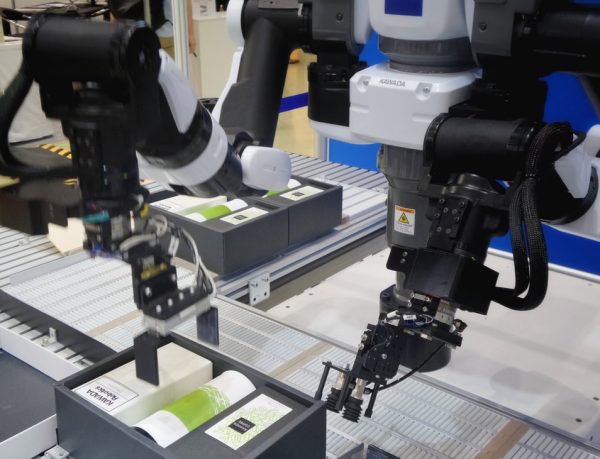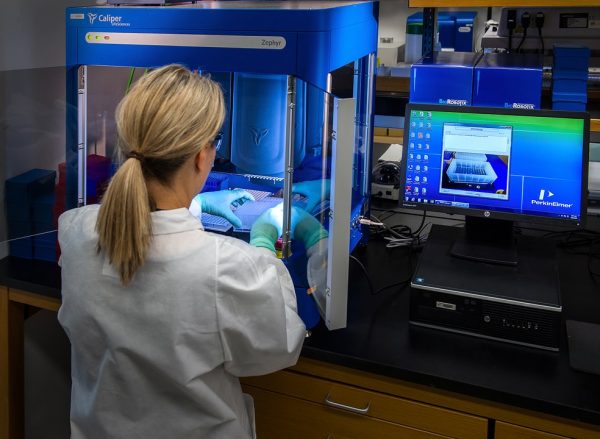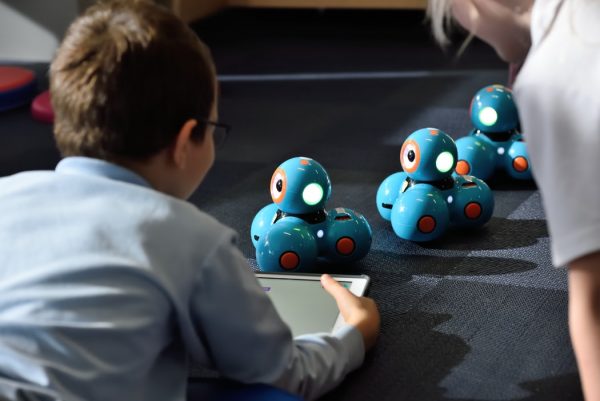What Is AI (Artificial Intelligence)?
There is not a universal definition of artificial intelligence (AI). Some define it through its field of study; others define it by how “human” its qualities are. When these definitions are added together, you get an idea of what AI is all about. AI is a branch of the computer sciences that develops machines into thinking and acting like humans. Machines, when built with AI, must think rationally and act humanly. Recent developments in AI have made them capable of speech recognition, problem-solving, and machine-learning. As you can see from these examples, humans are replicating what makes them distinct from other animals. The branches of AI cover processes, reasoning, and behavior. When combined together, one gets a simulation of human capabilities. For example, AI can begin reacting to environmental changes by itself. Adaptation is common around living beings but not with robots. Once AI is fully capable of learning, reasoning, and self-correction, it is an unstoppable brute of nature. But how do we know this now? We already use AI. A common misconception is that all it is good for is automated industrial work, but this is not true. As you will see below, we interact with AI more than we think.
Examples of AI You Use Every Day
Robots
Robots are one of the more obvious examples of AI. From an early age, we would often watch movies about AI invasions, led by “evil” robots. This is a far cry from where AI is heading, though. You may be unaware of the AI bots living in your home now. An example of this would be the Roomba 960 or 980 model vacuum. It cleans your house floors all on its own, as powered by AI. How does it do that? The Roomba 980 uses AI to scan a room’s size and get an idea of the objects that might be in its way. After scanning, it calculates the most efficient way to clean your living room floors. This includes the number of times your floors are supposed to be cleaned, by the way. Depending on the size of your room, the Roomba identifies how much cleaning should be done. It repeats cleaning cycles in a dusty small room if it has to.
E-Commerce
AI is around you more than you truly think. Now that the world is navigating a socially distant reality, online shopping has become a necessity for most. But do you notice that some of your must-buy items pop up on your screen more often? Even on pages you weren’t looking at? This is a product of an AI algorithm. These algorithms track how you use the internet, and do its best to personalize your web-surfing experience. Thus, you will get recommended products like the ones you have been looking at even on different platforms. You can be on YouTube watching an algorithm-suggested video, and advertisements of your favorite shoes will pop up. This is a reality for so many, and for a good reason, too. AI builds a loyal customer base, benefitting both companies and stakeholders. This AI feature also is best in recommending other options to you. Through studying your buying preferences and purchases, you are offered the best deals on e-commerce platforms. These recommendations are tailored to your interests and budget range. There are pros and cons to the use of AI in e-commerce. However, knowing that it is there, used on you, gives you the power to make more sound decisions. AI, should you want to, is here to help you make your decisions.
Deliveries
These e-commerce platforms are always looking for ways to be more efficient in delivery. Another option in the list of examples of AI is delivery services. No, not your Friday night pizzas; at least not those yet.
Ridesharing and Navigation Apps
Every day, Google filters hundreds and thousands of data to give you real-time updates on traffic worldwide. AI mapping, with AI pricing, makes it possible for your ride-sharing applications to exist. Automatic matching on ride-sharing apps like Uber and Lyft is a product of AI. The cars you’re riding are not as dependent on your luck as much as it depends on the algorithm. So next time you feel down about having to listen to another “mixtape,” don’t blame the world. This is one of the many examples of AI. But more than this, AI also reduces commute times exponentially. Using Google Maps, you have a 24/7 guide on the best routes to travel in. You know possible commute options, best commute times, shortcuts, and traffic maintenance hours. Rain or shine, you can count on AI to help the ever-changing world around you. Also, physical maps are quite hard to look at. Save time, energy, and resources by charging your phone and typing Point A and Point B.
Commercial Flight Autopilot
One of the earliest examples of AI is autopilot. While not the same, autopilot helped a lot in the creation of AI. In 2019, the world saw its first autonomous airplane. While pilots do an average of seven minutes of actual flying per flight, this is still a big feat. The Boeing plane in North America managed to land by itself without human intervention. This is possible because of visual data processing. A plane updates its flight controls depending on the processed visual data by AI. These AI programs detect factors such as infrared light and weather conditions.
Self-Driving and Parking Vehicles
As seen in the examples above, AI can identify spaces. Using deep learning, AI-powered engines can recognize space around vehicles. We use this to fly, to clean, and now, even to drive. Reading this may feel like a dream, but it isn’t. Cars are smarter because of AI. This gives its owners an extra layer of protection and ease. Companies program cars to see, think, and learn for themselves. Where a human might falter in parking because of anxiety, a car learns with caution. These machines can explore almost an infinite number of driving scenarios. A lot of companies manufacture AI-powered cars nowadays. Toyota, Mercedes-Benz, Volvo, and Audi are prime examples. However, the most popular one is Tesla. Teslas are self-driving cars powered by artificial intelligence. What one Tesla learns, all Teslas learn. In driving through uncertain conditions, Teslas pick up on certain turns and maneuvers. These are passed on to other Teslas as they update. This is only one of the many examples of AI that can change our day-to-day lives.
Plagiarism Checkers
It is not a mystery to most that plagiarism is rampant these days. A lot of information is accessible to everyone. A quick snipping of different work can result in a “brand-new” plagiarized paper. This is why teachers and editors use programs such as plagiarism checkers. Playing a significant role in these programs’ reliability is AI. With AI technology, machines learn to detect plagiarism through an analysis of writing style, indention, and word choice. Most use a database of references in doing this. AI sorts through digitized essays, books, and journals. The AI’s algorithm gets to compare and contrast documents, pinpointing plagiarized source code. In fact, plagiarism checkers are so advanced that it detects texts from sources that are not digitized.
Smartphones
At this point in history, our phones are an extension of our beings. They contain our personal information, photos, high scores, and our entire lives. These smart machines are our assistants in everything. Through these ubiquitous products, we also interact with AI. By that knowledge, AI is becoming ubiquitous, too. Prominent examples of AI are smartphone assistants. These are your Alexas, Siris, Bixbies, and Google Assistants. It is easy to recognize how they are AI: they process your word patterns by converting audio to text. From there, they do as they are told. As of recent, they can carry full-on conversations. Still, they aren’t Sophia the Robot, who is an AI legend. There is more to smartphone AI than our assistants. As our phones get clearer resolutions, we also get more AI built in them. Portrait shots, augmented reality, and scene detections are possible because of artificial intelligence. This technology does not only come in handy for self-piloting planes, but also for Instagram-perfect shots.
Spam Filters
Speaking of being ubiquitous, AI is in your emails as well. We should be thankful for the many ways AI has affected our lives, from how easy it has made it, to how much safer we feel. But by far one of the best examples of AI is spam filters. Gone are the days you have to manually sort through spam emails. Do you remember being asked to press links that look gibberish? Then it does not matter if you don’t, because you opened the email anyway? Now, you have to explain to everyone you “emailed” that you do not sell healthcare products you have never heard of? AI addresses this in all its forms. While always a work in progress, AI is currently successful in filtering spam messages. It factors in the message text, metadata, and signals to decide whether an email is a spam or not. Best yet, it can personalize what spam is for you. Your gym’s monthly newsletter may be spam to you but not to your gym buff friends out there. This is not all it can do for your inboxes, though.
Smart Replies in Gmail
A recent Gmail addition is smart replies, which eliminates the lull in typing emails passively. Writing emails is not one of the more interesting ways to spend one’s time, but we all have to do it. Smart replies are one of the newer examples of AI, but one of the most used since its release. Artificial intelligence learns what is in your email and how you type them. With this data, it suggests how you should phrase your emails. This makes for better grammar, tone, and efficiency. Replies can be written and sent through one click. It does not suck the life out of your writing, too, if that matters to you. AI learns how you respond to matters. But how does AI do it? It scans your texts and picks up on the context of your conversation through that.
Smart Email Categorization
Google can sort your email because of the aid of AI. Machine learning is taking broad strides in making emails easier to sort. Gmail users know that emails can be found in primary, social, and promotion inboxes. When you interact with these emails, labeling some as “important,” Google learns. In turn, this affects your interface. Your priority inbox is a result of this process. This makes it more efficient for you to go through your emails. No more of the endless scrolling and searching for “urgent” ones. To get more specific, Google also uses AI in categorizing emails into other categories such as updates, forums, and spam (mentioned above). With this AI innovation, communication between parties is quicker, and searching emails is easier.
Social Media Feeds
Of all the examples of AI, this comes with the least amount of shock. Knowing that AI studies your internet behavior and interactions gives you an idea of how optimized your social media feeds are. The way you experience social media is exclusive. Your social media is not your friend’s, neighbor’s, or sibling’s social media. It’s a custom-tailored platform, and it is why using it must come with caution. Because AI is so effective, your social media platforms can get addictive. It will keep showing you information that makes you engaged with your phone. Staying on your phone for long amounts of time is attractive to advertisers. Thus, the AI system keeps changing as your interests do. This is a highly effective process, and not a lot of people are aware of how AI affects your actual intelligence. Your opinions, views, and decisions are shaped by social media platforms, and these platforms are shaped by AI. Possible examples of these, however, are LinkedIn and Pinterest. The former matches candidates with jobs it deems suitable for your previous line of work. The latter uses AI to identify images, and this makes for an easy photo-search engine. There is no denying how effective AI technology is around us. Still, we must always remember that AI is not evil. It is used for safer, and more effective innovation. In using social media, be cautious. But do not let knowledge ruin your fun.
Chatbots
Examples of AI also include chatbots. AI’s ability to recognize text and audio also helps chatbots. People use chatbots in a variety of ways. Recently, you might have encountered these on online shops’ customer service. Chatbots serve to relay answers to common questions. It does its job well, with some even having names and avatars to feed the AI’s “human” identity. You can use these in scheduling appointments, ordering food, and other simple queries.
Video Games
Along with the airline industry, video games applied AI technology early on. Video games use AI when generating responses from non-playable characters. As video games open themselves up to new possibilities, they have more incentive to upgrade their systems. In upgrading their systems, they resort to machine learning rather than programming. Why? Using AI, in the long run, is easier for them. There will be less programming in processing different conversations among characters. To think, video games only started using AI for random video game level generation. Now, you have the option to play against it, too.
Digital Assistants
Mentioned above, digital assistants are the current face of AI. Because it is found in almost all smartphones, people know about Siri, Alexa, Google Assistant, and more. They search the internet for you, play a song for you, remind you of your tasks. Well, at least, this is what their starting features are. In the year 2020, your pocket assistants can also be your friends. You can order pizza, listen to music, or play several rounds of a game you like. These devices listen and learn with you, as well as integrating with your other devices. This last point is for all the busy bees that need to be reminded of their schedules at all times.
Security and Surveillance
Other than assist you, AI can also protect you. Surveillance systems across countries use AI in keeping countries safe. With the amount of land to cover, there cannot be a human for every security monitor in the world. AI’s object recognition and machine-learning abilities make it easier for security systems to watch themselves. Imagine CCTVs that catch criminals by a glance of their faces, where they give locations and leads quickly. This is not yet a standard for all places worldwide, but this is what the future is starting to look like.
Proactive Detection
Because social media platforms learn from how you use them, they try to do good by you. Facebook, for example, launched a proactive detection feature in 2017. Through this feature, patterns of searches can detect whether a person is considering self-harm. When a person is identified as suicidal, mental health resources are sent to the individual or to their friends. There are many examples of AI saving lives. This is only one of them. Social media platforms can partner up with moderators and first-responders for dire social situations.
What’s In the Future of AI?
AI as Manufacturers
We are beginning to use AI-driven robots for industrial manufacturing. Because a robot’s power is only as limited as its hardware, using robots helps cost-effectiveness and productivity. AI can perform specific tasks, yes, but they can perform them with precision and accuracy. There are no psychological or emotional factors to an AI’s work result. Their sensors and programs can keep work running smoothly.
AI in Transportation
In the ideal future, everyone can have equal access to cars. However, with AI, this changes to “everyone having access to autonomous cars.” Experts’ predictions on the mass-production of AI-powered cars vary. Some say it is decades away, others argue that it will be more accessible by 2021. Point is, we are not so sure about when smart cars are arriving. Although, we do know where these cars are heading. With the help of AI, commutes can be shortened because it will result in fewer road accidents. More than these, carpooling can be far more common. This decreases heavy traffic, also shortening your commute time. These days, examples of AI already include ride-sharing app services. Uber uses machine learning in computing for ETAs and identifying possible pick-up locations. Third parties like Uber can ensure safety and trust through their use of AI.
AI as Business Advisors
Running a successful business requires a lot of math, probability, and luck. Using AI, one can argue, heightens these factors. Imagine having to run the numbers of the most efficient way to use a resource. AI can do that quicker and more efficiently. Start-ups like Wealthfront and Betterment automate the skills of business investors and customers. By doing this, they create functioning AI business advisors. As with all other fields, using AI in business costs less while yielding more or less the same results. There are no more agenda clashes with fund managers, you will have a robot running stats for you. AI keeps business advice dynamic and personal. Should we veer towards them, expect a vibrant and relevant business industry. Machine learning keeps the stakes higher than ever before.
AI in Healthcare
Science and technology go hand-in-hand at all times. Healthcare yields great benefits from technological advancements. AI, as of recent, included. With AI, diagnosis times are quicker and more accurate. This is poignant information. Why? The earlier you detect a disease, the higher the chances of you surviving it. The same goes for drugs. Everyone knows that new viruses like COVID-19 keep spreading because there are no medications for it right now. With a new disease, we rely on drug companies and administrations to create solutions fast. AI can help make these discoveries fast. Using AI in healthcare literally saves lives. This is only one of the best examples of AI.
AI in Education
The future of AI holds promise to the future of education and its systems. With machine-learning capabilities, AI can create a personalized learning atmosphere for students. AI can take account of students’ strengths and weaknesses. People can base organizational decisions from there. AI can also help identify at-risk students. It can give teachers and parents warnings before situations get worse. This technology gives students a chance to be better and lauded for their efforts. Another way AI can help education is through the use of virtual assistants. After learning at-risk students, AI itself can help them get out of their learning stumps. However, AI users must know that AI is as effective as its human counterparts.
Final Word
These examples of AI prove that this technology can help us towards a brighter future. Albeit more complicated, AI provides simple and direct solutions to our human problems. Still, we must approach AI with caution. Not because of how it will take over the world, but of how it will affect our humanity in the long run. It is always best to work with AI. Do not let AI do all the work, though. While machine-learning creates an effective algorithm, it cannot recreate human nuances. Man and machine must work together to create a better world.
